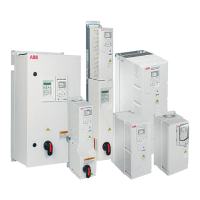■ European Union and United Kingdom
To meet the European Union Directives and United Kingdom Regulations, according
to standard EN 60204-1, Safety of Machinery, the disconnecting device must be one
of the following types:
• switch-disconnector of utilization category AC-23B (IEC 60947-3)
• disconnector that has an auxiliary contact that in all cases causes switching devices
to break the load circuit before the opening of the main contacts of the disconnector
(EN 60947-3)
• circuit-breaker suitable for isolation in accordance with IEC 60947-2.
■ North America
Installations must be compliant with NFPA 70 (NEC)
1)
and/or Canadian Electrical Code
(CE) along with state and local codes for your location and application.
1)
National Fire Protection Association 70 (National Electric Code).
■ Other regions
The disconnecting device must conform to the applicable local safety regulations.
Examining the compatibility of the motor and drive
Use asynchronous AC induction motors, permanent magnet synchronous motors or
ABB synchronous reluctance motors (SynRM motors) with the drive.
Select the motor size and drive type from the rating table on basis of the AC line voltage
and motor load. You can find the rating table in the appropriate hardware manual. You
can also use the DriveSize PC tool.
Make sure that the motor can be used with an AC drive. See Requirements
table (page 89). For basics of protecting the motor insulation and bearings in drive
systems, see Protecting the motor insulation and bearings (page 88).
Note:
• Consult the motor manufacturer before using a motor with nominal voltage that
differs from the AC line voltage connected to the drive input.
• The voltage peaks at the motor terminals are relative to the supply voltage of the
drive, not to the drive output voltage.
■ Protecting the motor insulation and bearings
The drive employs modern IGBT inverter technology. Regardless of frequency, the drive
output comprises pulses of approximately the drive DC bus voltage with a very short
rise time. The pulse voltage can almost double at the motor terminals, depending on
88 Guidelines for planning the electrical installation

